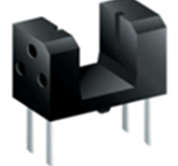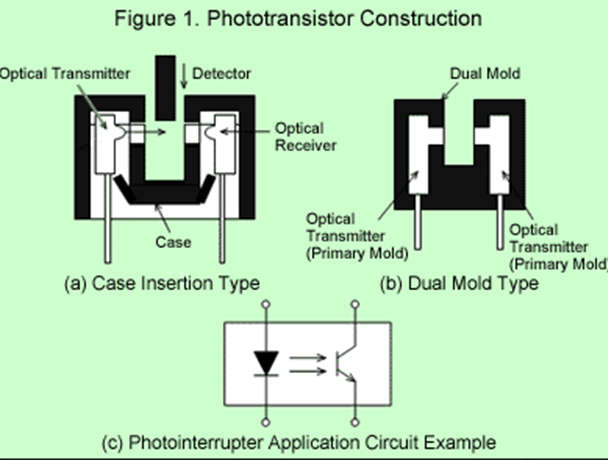- Broken-light sensors are nothing but, Photo interrupters.
- A photo interrupter is a transmission-type photosensor that integrates optical receiving and transmitting elements in a single package. Since the method involves light blocking ROHM calls this device a photo interrupter.
- A long-life GaAs infrared photodiode is utilized for output while a single phototransistor and photo IC are integrated for light detection.

Working
- The photo interrupter consists of light emitting elements and light receiving elements aligned facing each other in a single package.
- The transmitter part in the sensor emits light which is either transmitted or gets blocked(interrupted) by some object and reflects.
- The receiver receives this interrupted light which is reflected and senses the interruption.
- Photo interrupters are non-contact (optical) switches, improving reliability by preventing wear-and-tear due to abrasion (contact).

Types of Photo Interrupters
- Transmissive photo interrupter.
- Optoelectronics Photo interrupter.
- Dual mold photo interrupters.
- Insertion type photo interrupters.
- Dual mold photo interrupters are generally more compact than their insertion-type counterparts.
